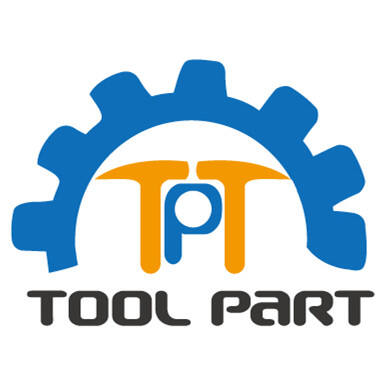Understanding the Essential Role of Backing Pads in Surface Preparation
In the world of surface finishing and polishing, backing pads serve as the crucial interface between power tools and abrasive discs. These versatile components provide the foundation for achieving professional-grade results across various materials and applications. Whether you're working on automotive detailing, woodworking, or metal fabrication, selecting the right backing pad can significantly impact your project's outcome.
The backing pad's design and construction directly influence factors such as work efficiency, surface finish quality, and tool longevity. Professional craftsmen and DIY enthusiasts alike rely on these essential accessories to transform rough surfaces into perfectly smooth finishes. Understanding the nuances of different backing pad configurations helps ensure optimal performance and prevents costly mistakes during your finishing operations.
Common Types of Backing Pads for Different Applications
Hook and Loop Backing Pads
Hook and loop backing pads represent the most widely used variety in modern surface preparation. This system allows for quick and easy disc changes while maintaining secure attachment during operation. The hook-faced backing pad surface creates a strong connection with loop-backed abrasive discs, enabling smooth transitions between different grit sizes without compromising stability.
Professional users particularly appreciate the versatility of hook and loop systems, as they can switch between multiple abrasive grades without tools or significant downtime. The backing pad's hook material is engineered to withstand repeated attachments and detachments while maintaining its gripping power over extended periods.
Rigid Phenolic Backing Pads
When dealing with high-pressure applications, rigid phenolic backing pads offer exceptional durability and stability. These backing pads feature a solid construction that resists flexing and maintains shape even under intense use. The phenolic material provides excellent heat resistance, making it ideal for heavy-duty grinding and sanding operations.
The robust nature of phenolic backing pads makes them particularly suitable for industrial applications where consistent performance is crucial. Their rigid structure helps maintain flat surfaces during aggressive material removal, preventing unwanted gouging or uneven finishing patterns.
Material Characteristics and Performance Features
Foam-Based Backing Pads
Foam backing pads excel in applications requiring precise control and surface conformity. The foam construction allows the backing pad to adapt to subtle contours while maintaining even pressure distribution. This flexibility makes them especially valuable for finishing curved surfaces or dealing with complex geometries.
Different foam densities offer varying levels of compliance, allowing users to select the optimal backing pad for specific finishing requirements. Soft foam variants excel at fine finishing and polishing, while medium-density options provide a balance between flexibility and material removal capability.
Rubber Compound Backing Pads
Rubber compound backing pads combine durability with controlled flexibility, offering excellent vibration dampening properties. These backing pads effectively reduce operator fatigue during extended use while maintaining consistent performance. The rubber composition provides good heat dissipation, helping to prevent damage to sensitive surfaces.
The natural resilience of rubber compounds helps these backing pads maintain their shape over time, even when subjected to significant lateral forces. This characteristic makes them particularly suitable for applications requiring both precision and endurance.
Selecting Backing Pads Based on Tool Interface
Thread Mount Systems
Thread mount backing pads offer secure attachment to power tools through standardized threading patterns. This mounting system ensures maximum torque transfer and minimal slippage during operation. The threaded interface provides excellent stability for high-speed applications while allowing quick pad changes when necessary.
Different thread sizes and patterns accommodate various tool manufacturers and specifications, making it essential to verify compatibility before purchase. Professional users often maintain multiple backing pad sets to ensure seamless integration with different power tool platforms.
Quick-Change Adapters
Modern backing pad systems increasingly feature quick-change adapters that combine security with convenience. These systems allow rapid backing pad exchanges without sacrificing connection stability. The quick-change mechanism typically incorporates positive locking features to prevent accidental separation during use.
The efficiency gains provided by quick-change systems make them particularly valuable in production environments where minimizing downtime is crucial. The robust design of these adapters ensures reliable performance even under demanding professional use.
Maintenance and Care Considerations
Cleaning and Inspection Protocols
Regular maintenance of backing pads significantly extends their service life and ensures consistent performance. Proper cleaning involves removing accumulated debris and adhesive residues without damaging the pad surface. Inspection should focus on identifying signs of wear, such as hook deterioration or edge deformation.
Professional users should establish routine maintenance schedules based on usage patterns and operating conditions. This proactive approach helps prevent unexpected failures and maintains optimal finishing quality throughout the backing pad's lifecycle.
Storage and Handling Guidelines
Proper storage practices protect backing pads from environmental factors that could compromise their performance. Maintaining appropriate temperature and humidity levels prevents material degradation and ensures consistent operation. Careful handling during storage and transport prevents physical damage that could affect pad balance or surface uniformity.
Implementing organized storage systems helps track backing pad inventory and rotation, ensuring that all pads remain within their recommended service life. Professional workshops often designate specific storage areas to protect these essential accessories from contamination and damage.
Frequently Asked Questions
How often should backing pads be replaced?
The replacement interval for backing pads depends on usage intensity, operating conditions, and maintenance practices. Generally, professional users should inspect backing pads weekly and replace them when showing signs of significant wear, reduced grip strength, or uneven surfaces. Most backing pads typically last 3-6 months under regular professional use.
Can backing pads be used with different abrasive types?
While backing pads are designed to accommodate specific attachment systems, they can generally work with various abrasive types within their designated attachment category. However, users should ensure the backing pad's specifications match the intended application's speed, pressure, and disc size requirements.
What causes premature backing pad wear?
Several factors can accelerate backing pad wear, including excessive pressure during use, improper angle application, exposure to harsh chemicals or extreme temperatures, and inadequate maintenance. Using the correct operating technique and following manufacturer guidelines helps prevent premature deterioration and ensures optimal performance.
